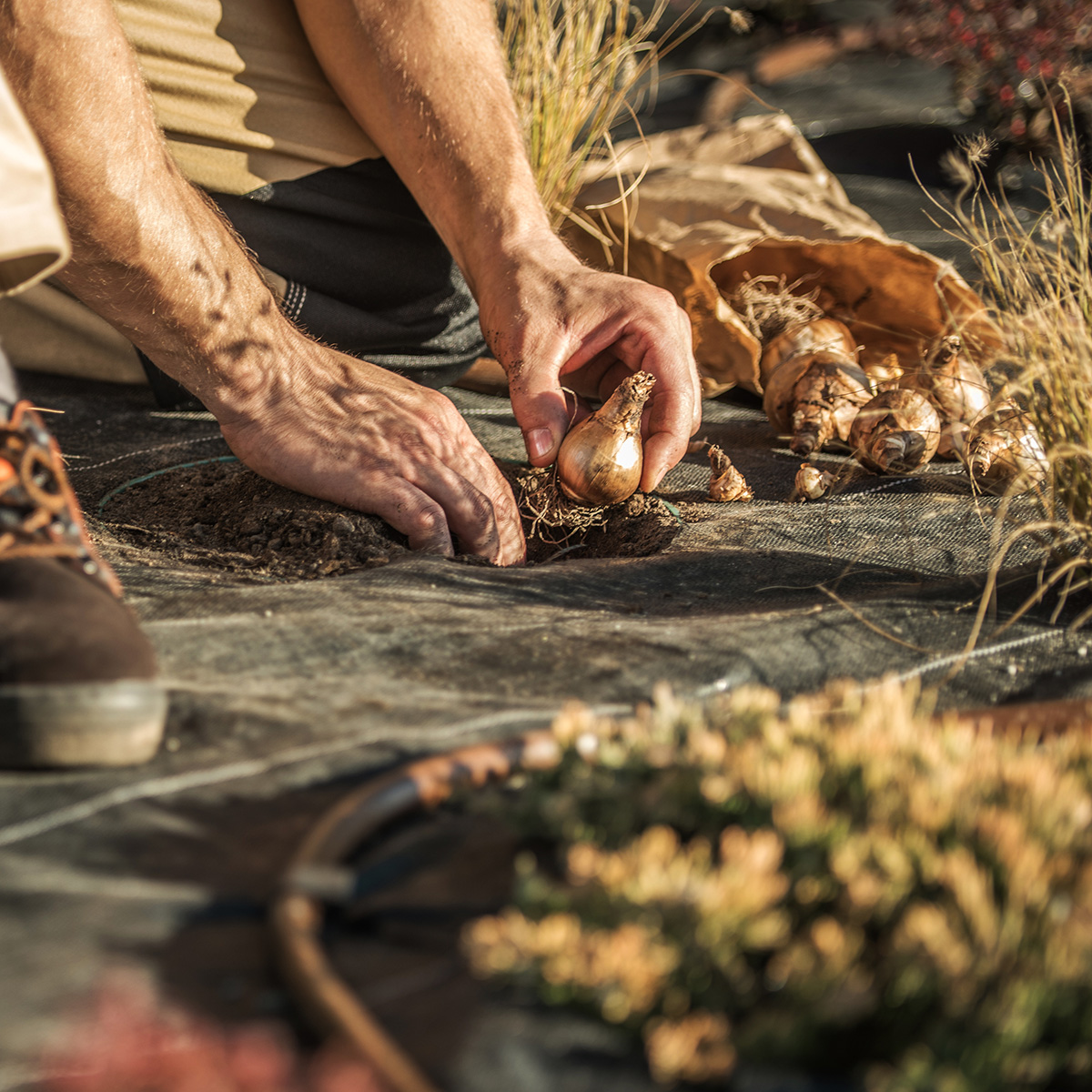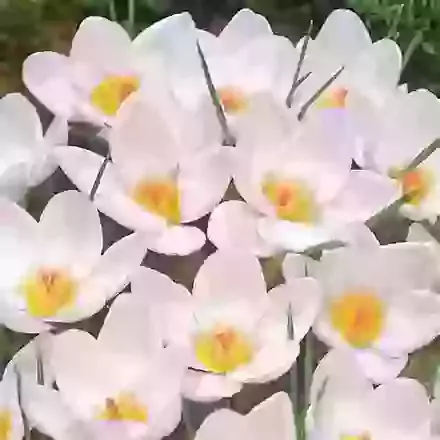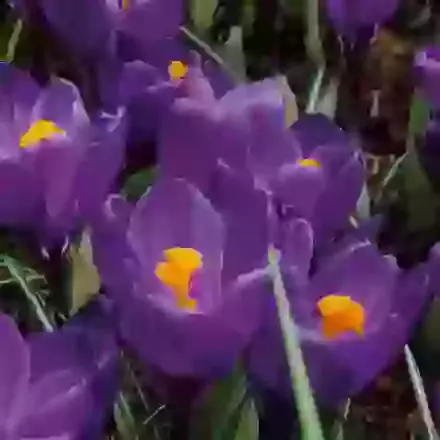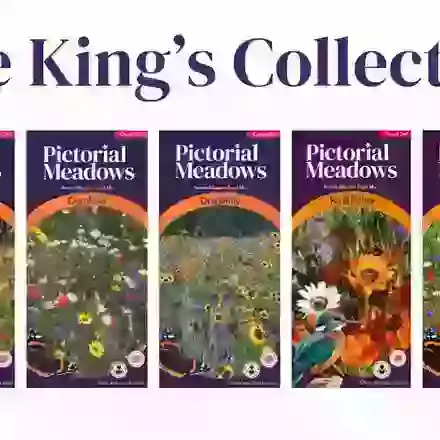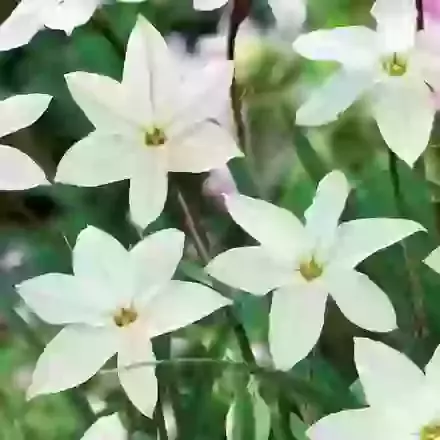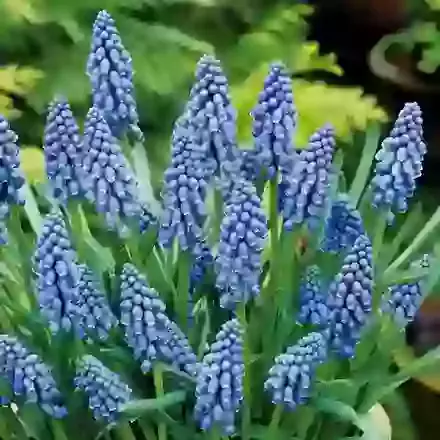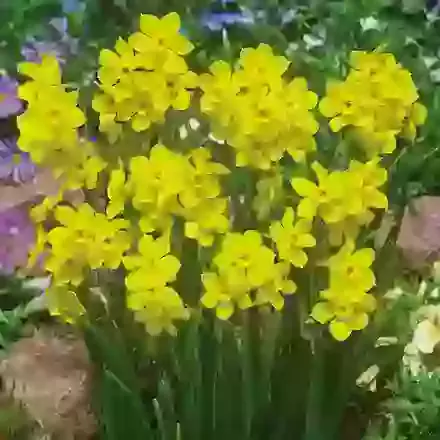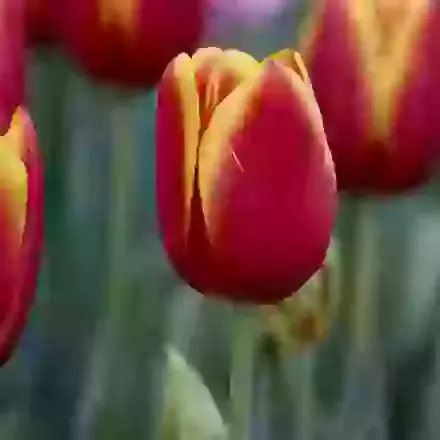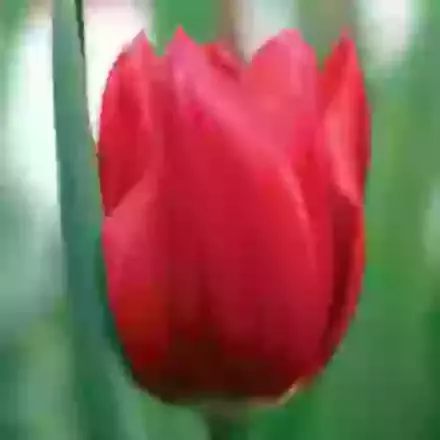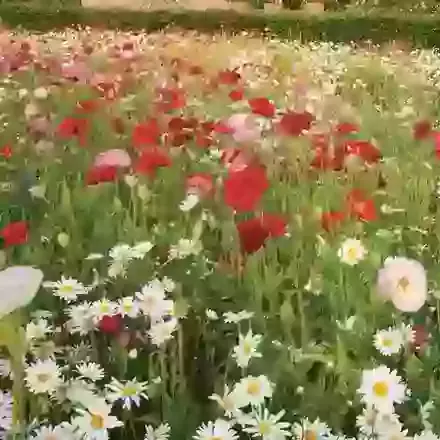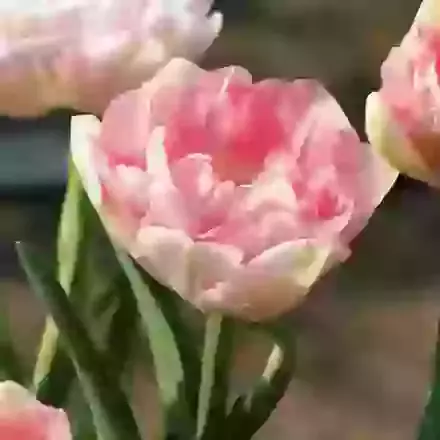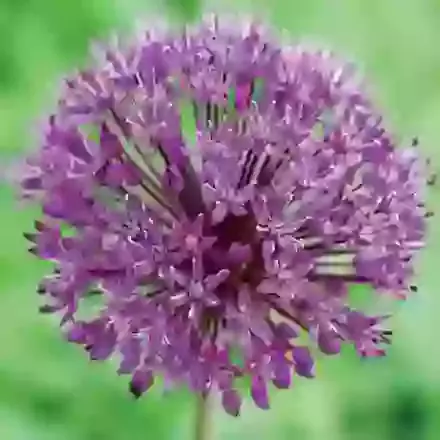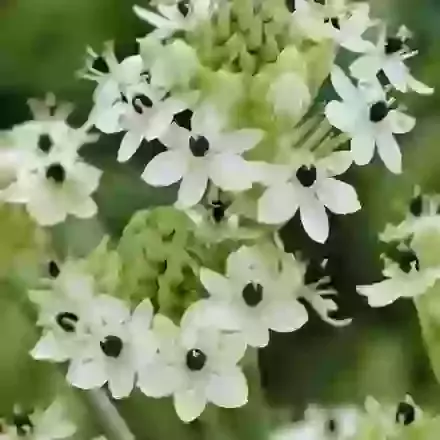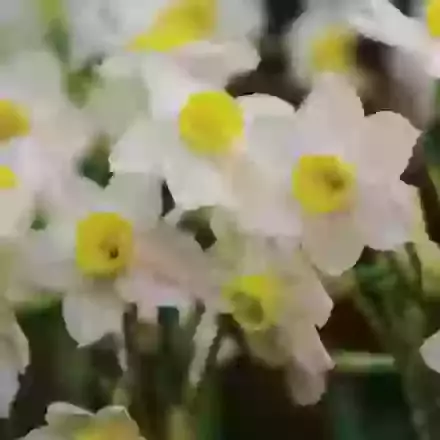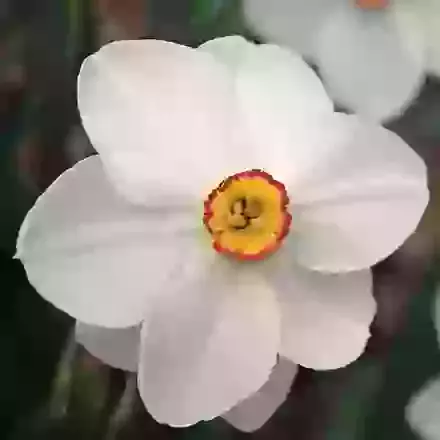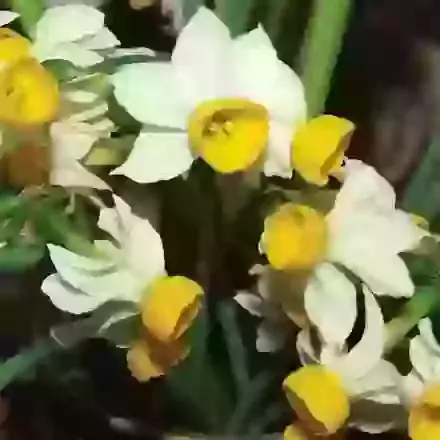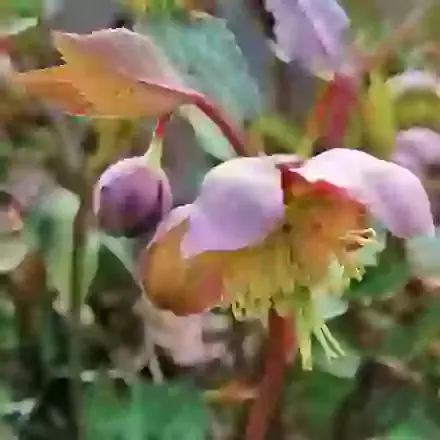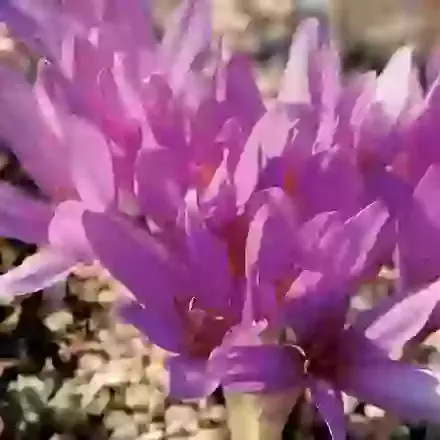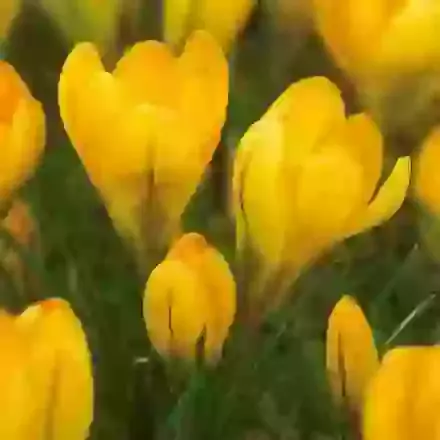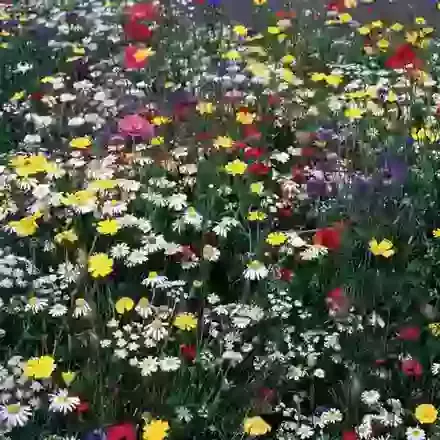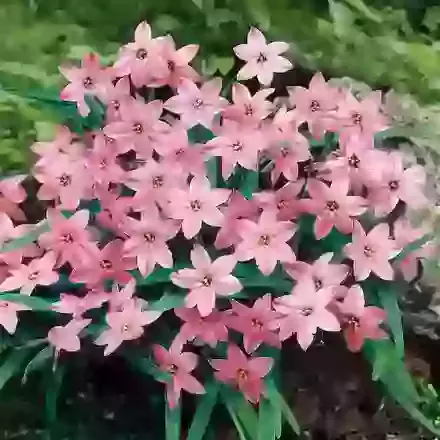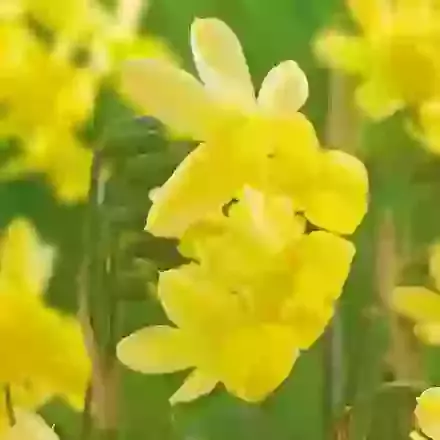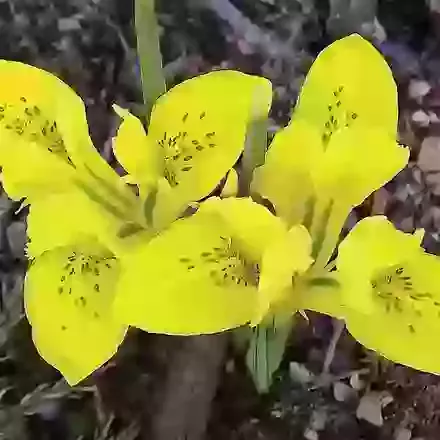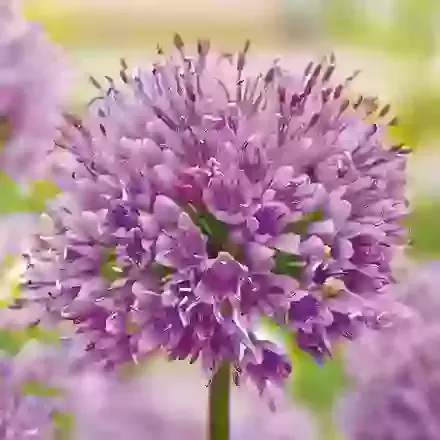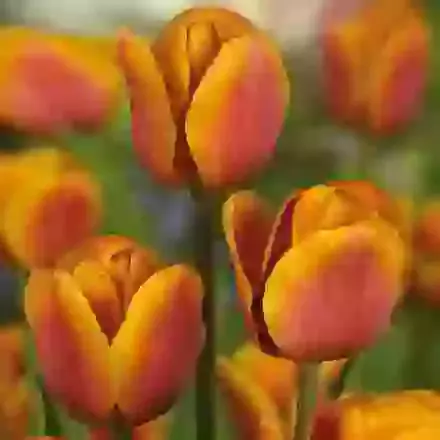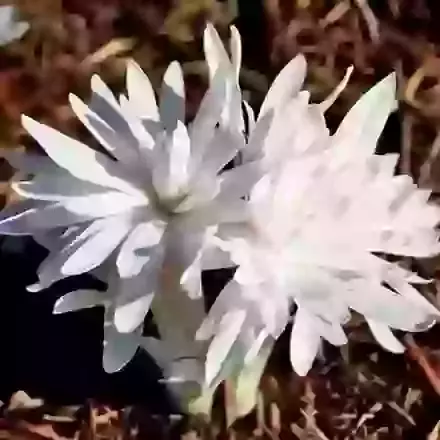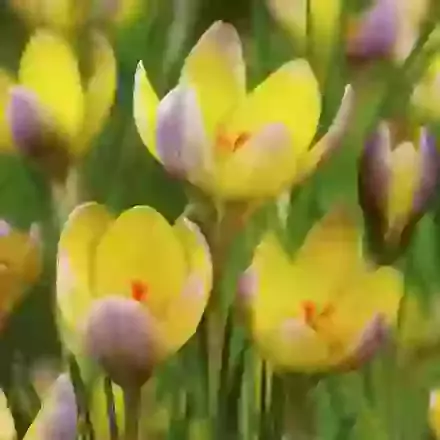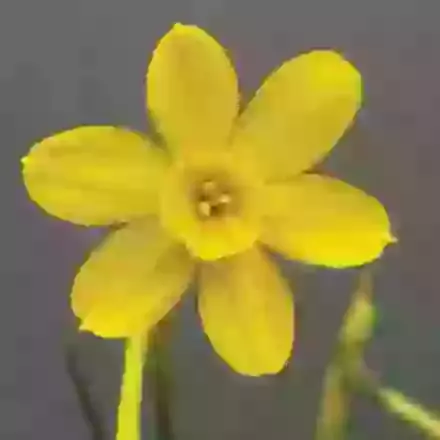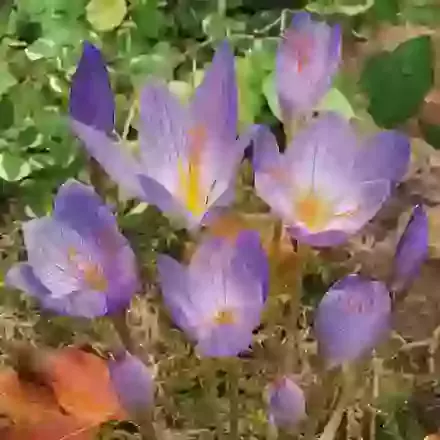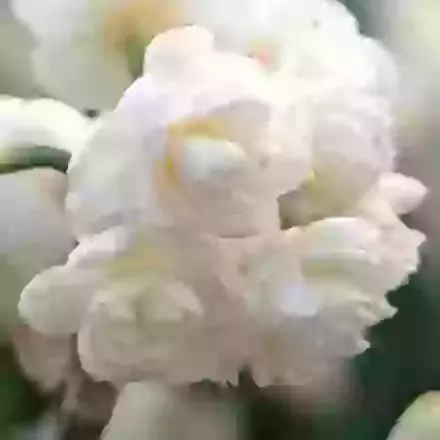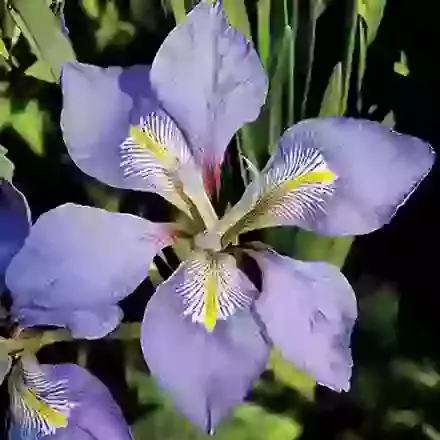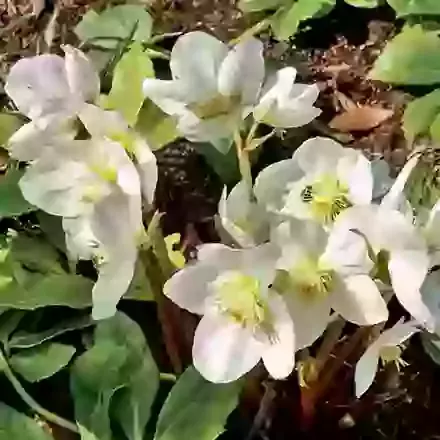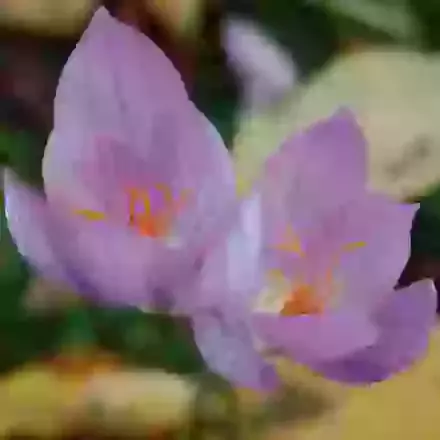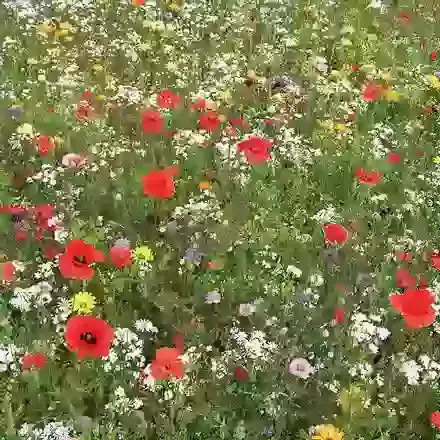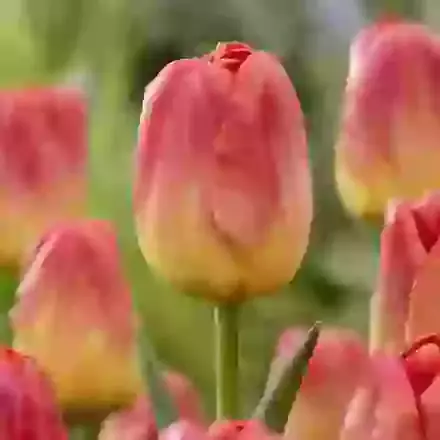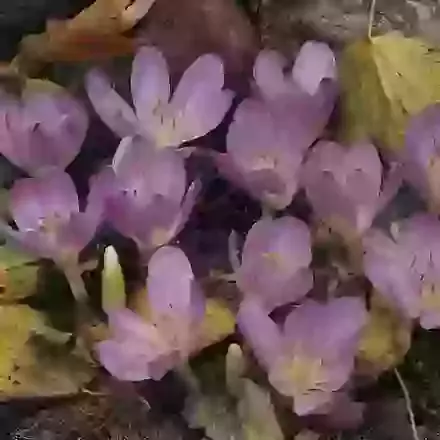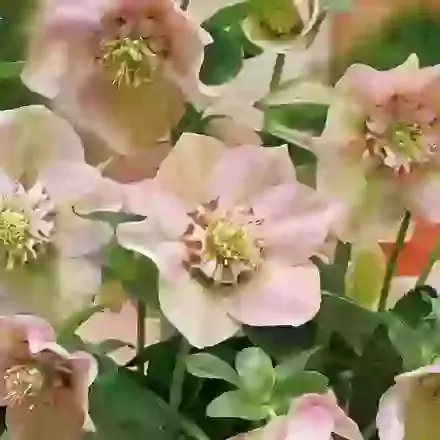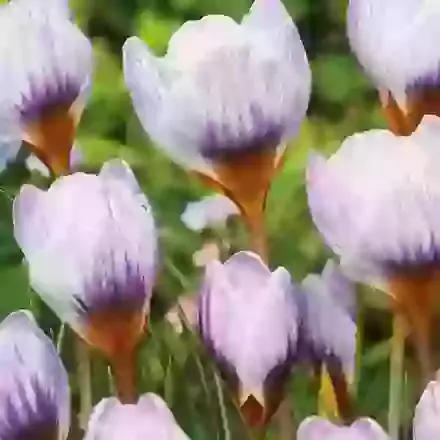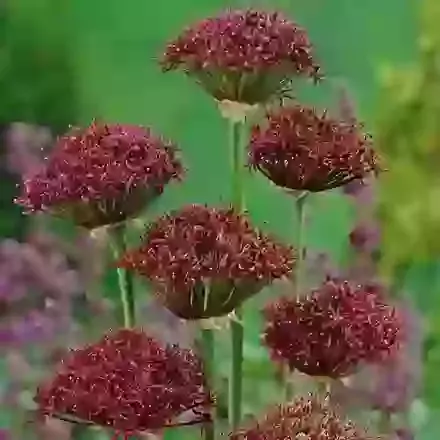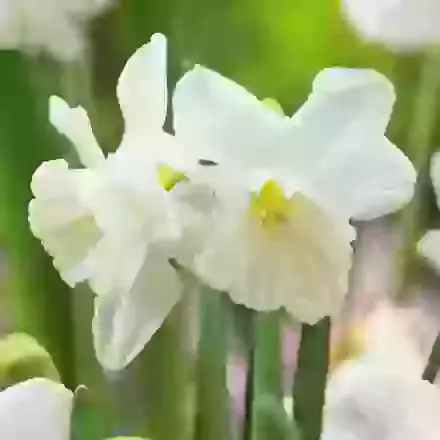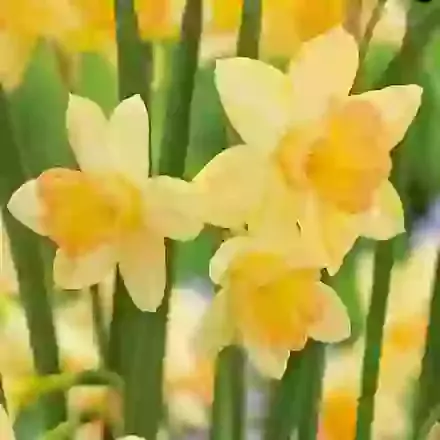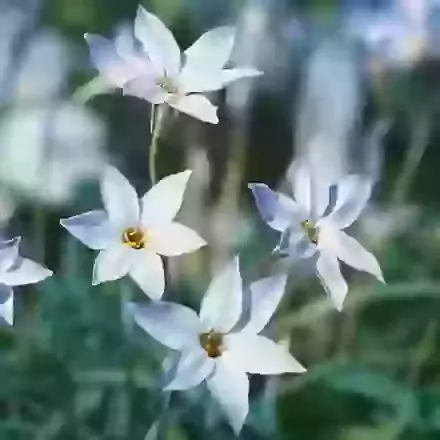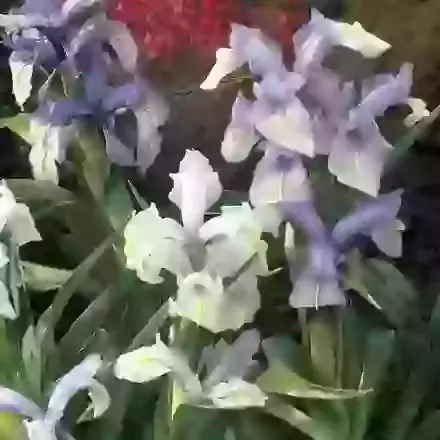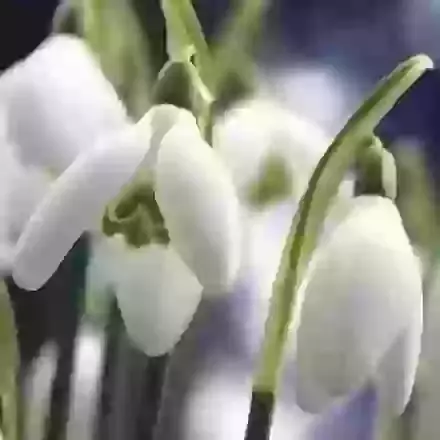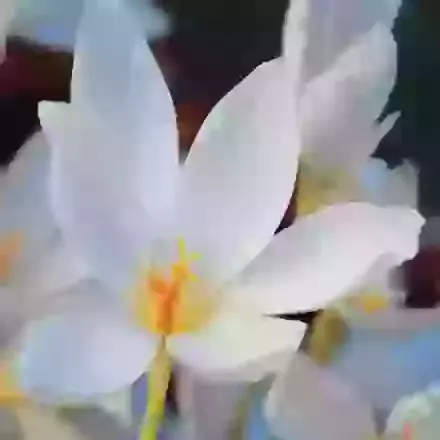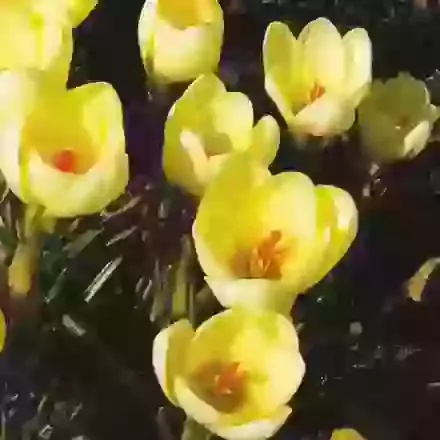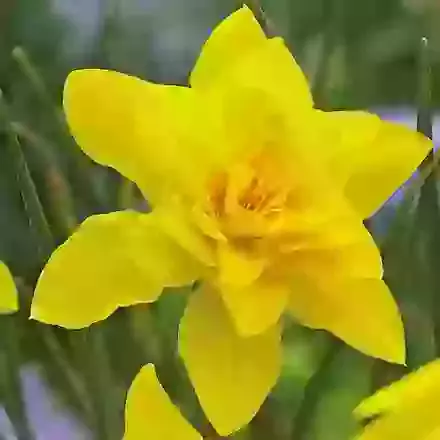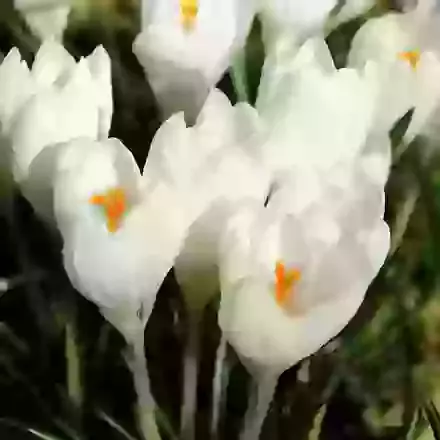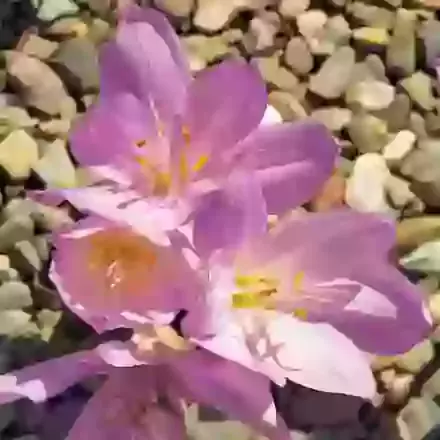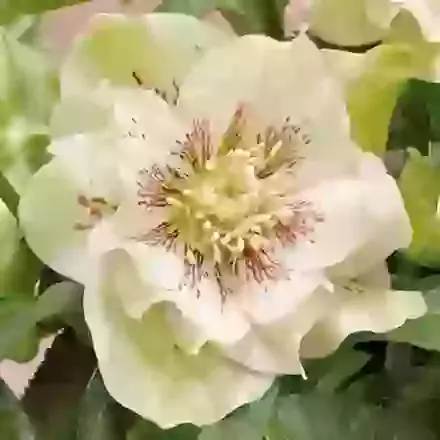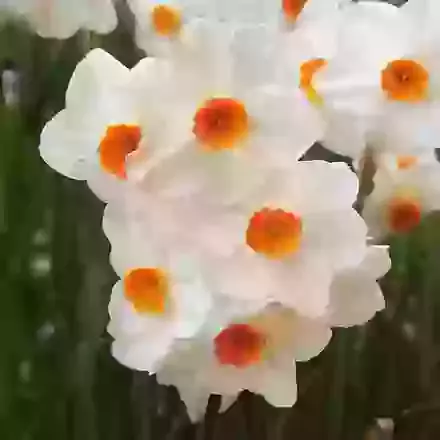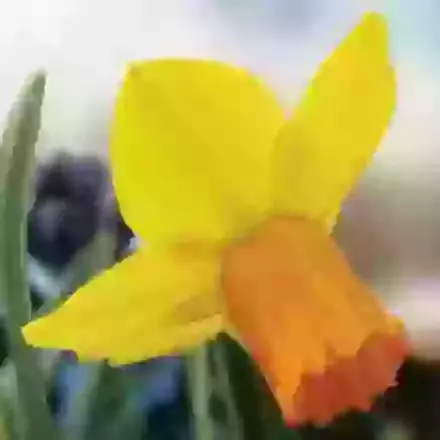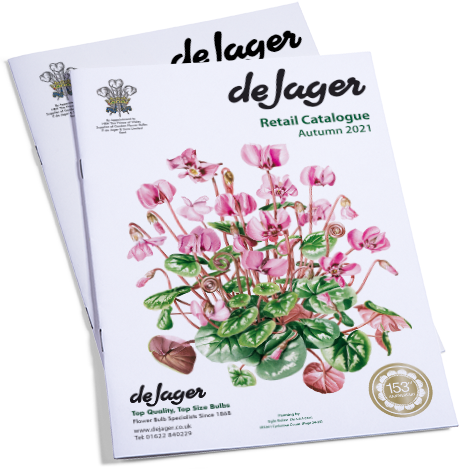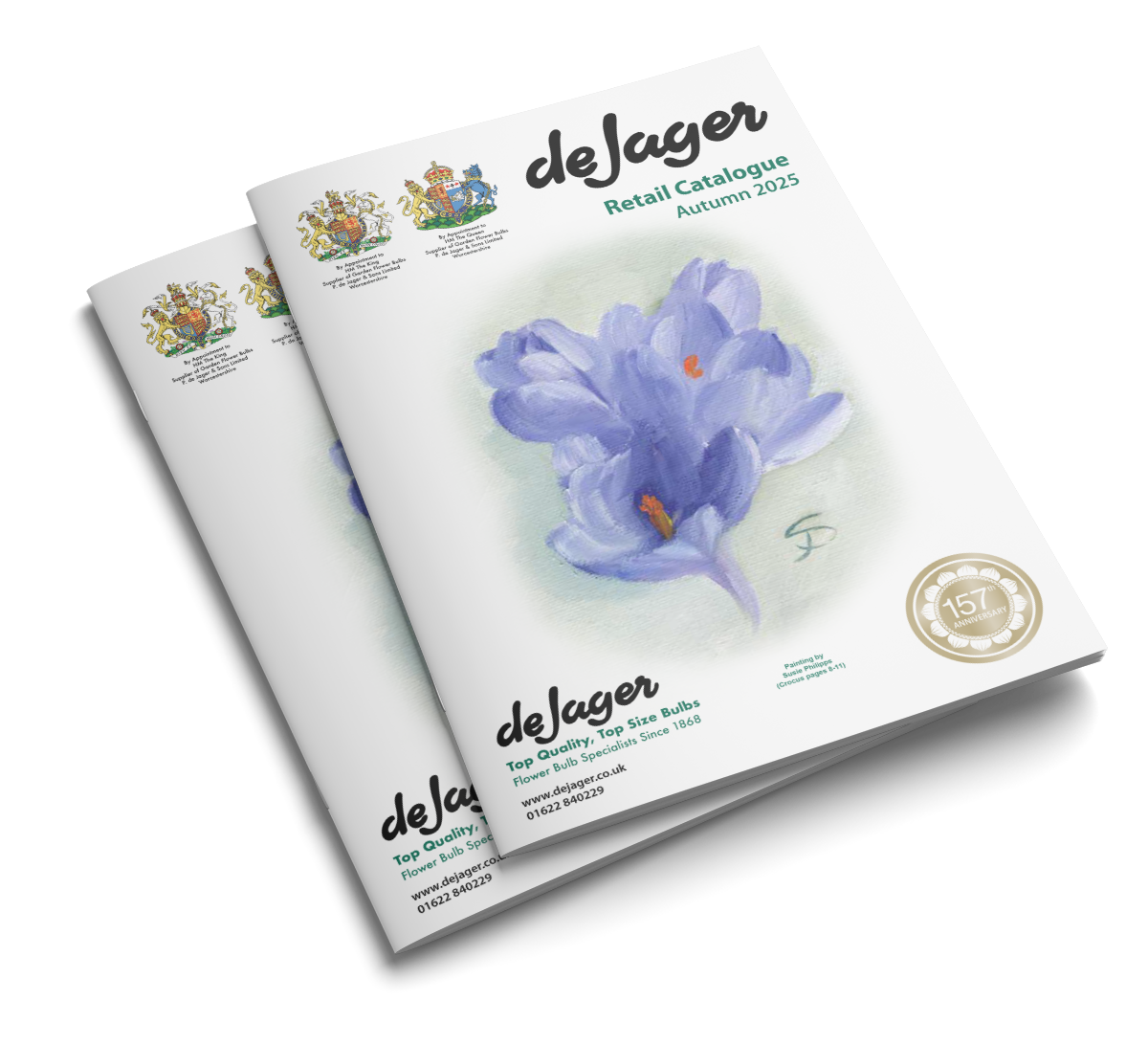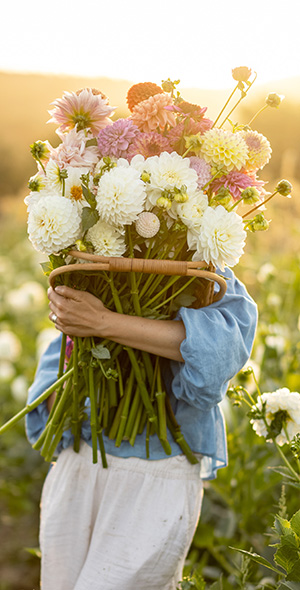Since 1868 de Jager has been producing top quality, top sized bulbs. The large sizes do make an enormous difference, providing bigger flowers, stronger stems, and better naturalisation. Choose from over 720 varieties and transform your garden with scent and colour. Autumn Flowering Bulbs now available to order.
-
Ard Schenk
C2152
Pure white, long-lasting flowers open wide like petite waterlilies during March on delicate Crocus ‘Ard Schenk’.
Named after a famous speed skater from the Netherlands, these icy beauties are a wonderful welcome to spring when they flower as a ribbon of white through the border and naturalised in grassy areas.
The petals feature deep purple streaks on the outside and a glowing yellow throat. Rich golden stamens are held inside each cup, attracting pollinators from far and wide.
Can also be grown in containers and make a great addition to mixed spring pots as one of the first varieties to bloom.
-
Abba
T1241
The Abba tulip is a stunning, glowing tomato-red double tulip with cardinal-red flames. Early flowering and fragrant, it fills the garden with vibrant colour and delightful scent. The rich, fiery petals create a dramatic, captivating display.
Plant these for an early burst of colour which awakens the senses and enlivens your garden.
-
Flower Record
C2252
Large goblets of opulent deep purple flowers bring a splash of welcome colour early on in the season with Crocus ‘Flower Record’.
This beautiful variety will naturalise easily in the garden, whether in an open grassy area, beneath a mature tree or in the border. Excellent for wildlife gardens and attracting spring pollinators such as bumblebees and hoverflies when they bloom during February and March.
The pretty violet cups open fully in warm sunshine, showing off the glorious golden stamens within and close up as the sun goes down to protect their treasure.
Bold and colourful Crocus look wonderful planted in large drifts to celebrate the beginning of spring.
-
The King's Collection
SD139
We are delighted to feature the King’s Collection, to celebrate our friends at Pictorial Meadows winning the highly prestigious King’s Award for Enterprise in Sustainable Development.
This set includes five 6g packets of the following mixes: Classic, Cornfield, Dragonfly, Kingfisher and Patriotic. These seed mixes are designed by specialists to be vibrant, high-impact and attract wildlife.
They show waves of colour from summer right up to the first frosts and provide a rich nectar source for bees and other pollinators. The benefit of an annual meadow is that it is quick and easy to grow, and perfect for any skill level.
-
Alberto Castillo
M5555
Perfect, star-shaped flowers of pure white are produced in abundance on Ipheion ‘Alberto Castillo’ during May and June, with a second flush of flowers in autumn.
The bulbs of this early summer beauty should be planted in autumn, in groups or ribbons near the front of the border, in a rockery, or in containers of loam-based compost. Ipheion prefer full sun and well-drained soil.
Elegant, wiry stems up to 20cm tall hold the exquisite, sweetly scented flowers above clumps of glaucous foliage.
Ipheion ‘Alberto Castillo’ holds a prestigious Award of Garden Merit for plant excellence and reliability.
-
Armeniacum Marleen
M5726
Imagine a sea of very large, deep cobalt-blue flowers, their strong perfume wafting through the garden on a warm spring day. Muscari Armeniacum Marleen is a robust variety is perfect for naturalising, creating a vibrant, aromatic landscape. Bold cobalt hues captivate any onlooker, making a striking addition to any garden.
Resilience ensures a return year after year, enhancing your garden with steadfast beauty and intoxicating fragrance.
-
Baby Boomer
N0494
Jonquilla Baby Boomer graces gardens with delicate yellow flowers, each adorned with a rich, deep orange-yellow cup. With six to eight blossoms per stem, this variety offers an abundant floral display.
Their small yet striking flowers create a lively, warm ambiance, bringing a touch of golden sunshine and vibrant energy to any garden setting.
-
Body Builder
T1429
Not named lightly - this mid season tulip Body Builder shows strength in every line. Bold red petals flare with yellow-orange trim, each flower held high on a muscle-strong stem. Perfect for cutting, marvellous for mass planting. April to May sees the garden packed with colour and confidence. A tulip made not for whispers, but accolades.
-
Apeldoorn
T1551
A highly popular, much-admired Darwin Hybrid, ‘Apeldoorn’ is renowned for its superb, oval-shaped flowers held on long, strong stems. The exceptionally large blooms are draped with cherry red petals, lit from below by a golden base and punctuated by a prominent black centre.
These striking tulips have a bold presence when planted in sweeping drifts amongst borders, and when arranged an abundant display in large containers. A gentle vanilla scent will add an extra dimension to your enjoyment of ‘Apeldoorn’. With Fosteriana as one its parent varieties, this long-lasting tulip returns well each year as a perennial bulb.
-
Annual Classic Mix
SD111
Pictured here at The Eden Project, our ‘Classic Annual Mix’ will create a diverse, abundant wildflower meadow in your garden. This selection is carefully balanced for a continual succession of flowering, with varying colours throughout the season. From an early summer display of vivid blue, pink and white to a rich autumnal tapestry of deep red, orange and yellow, the ‘Classic Annual Mix’ offers a spectacular show right through until November. With a height of up to 1m, this exuberant collection incorporates Shirley Poppy, Californian Poppy, Cornflower, Fairy Toadflax, Tickseed, Red Orache and Larkspur.
Flowering Height up to 1m (39’’).
-
Angelique
T1812
Often mistaken for a fragrant, ruffled paeony rather than a tulip, ‘Angelique’ is a romantic-looking, soft-pink paeony-tulip.
The apple-blossom pink blooms open fully during April and May and make stunning cut flowers for pretty spring arrangements. Cut or pull the stems before buds fully open for a long vase-life.
Awarded the prestigious Award of Garden Merit by the RHS, ‘Angelique’ is a remarkable tulip which looks particularly effective when the bulbs are nestled closely together in pots and planted as a drift in the border.
Combine with fellow ice-cream shades for an angelic display, or with dark purple hues for delectable contrast.
-
Aflatunense
M5000
An extremely popular, heirloom species of Allium – ‘Aflatunense’ produces umbels of purple-lilac flowers in May.
The handsome violet globes sit proudly on straight stems up to 75cm tall in the border and are excellent for drying and using in seasonal arrangements.
Alliums are timeless, versatile plants which are as at home in a contemporary planting scheme, as they are in a traditional cottage garden border.
Plant the bulbs in full sun and where left undisturbed, they will naturalise over time. Underplant with textural perennials such as Hostas, Ferns, Heuchera and grasses which will hide any fading foliage.
-
Arabicum
M5773
Otherwise known as ‘Star of Bethlehem’, Ornithogalum ‘Arabicum’ is crowned by tightly packed clusters of white, star-like flowers, each punctuated by a black, bead-like centre.
The RHS has recognised this variety as part of their ‘Plants for Pollinators’ scheme, and the pollen-packed blooms will bring your garden to life with the gentle buzzing and fluttering of bees and butterflies. Renowned by florists for their exceptionally long vase life and their long, sturdy stems, make the most of your Ornithogalum indoors as well as out.
Lift these half-hardy bulbs once the flowers and foliage have faded and place in a sheltered, frost-free location. Re-plant in late spring for an encore performance.
-
Avalanche
N0511
The strong, upright stems of Narcissus ‘Avalanche’ carry a remarkable plethora of blooms – up to 20 flowers are held in generous clusters on each stem. Broad, milk-white petals encompass a dinky, buttercup-yellow, acorn-shaped cup. This cultivar bears a well-deserved RHS Award of Garden Merit, confirming its exceptional quality.
Heighten the extraordinary fragrance of ‘Avalanche’ by planting in swathes amongst borders, lawns, and rockeries, and in pots against a sunny wall. This Tazetta variety responds equally well to indoor growing – try forcing bulbs in bowls to bring spring joy even when the weather outdoors is not so tempting.
-
Actaea
N0561
Muse of the poets, widely believed to be the variety mentioned by Virgil, Poeticus Narcissi have an inspirational purity of beauty and grace. The historical ‘Actaea’ features a ring of crisp white petals like freshly ironed linen, centring on a striking, crimson-edged golden eye.
Single blooms nod elegantly from slender, curving, swanlike necks. This much-admired old favourite has been granted an RHS Award of Garden Merit for its excellence and dependability. Amongst the best for naturalising in drifts amongst lawns, orchards, dappled shade, and meadows. Equally enchanting in generous pots by the door, to capitalise on the heady fragrance of jasmine and hyacinth.
-
Canaliculatus
N0582
Narcissus ‘Canaliculatus’ is a terrific dwarf species, which valiantly punches above its weight. The name may be a tongue-twister, but the flowers are neat and sweet, with a milk-white perianth and a miniature canary yellow cup above handsome, blue-green foliage. With up to 4 heads carried in umbels, each stem seems laden with bowing blooms.
The compact size of this bantam variety lends itself to edging borders and rockeries and dotting amongst lawns. Capitalise on the soft scent by filling containers by the door. Short, sturdy stems are suitable for more exposed positions, where ‘Canaliculatus’ will hunker down contentedly and bloom unperturbed.
-
Lividus
M5502
Helleborus ‘Lividus’ bears heavily laden clusters of elegant, cup-shaped blooms with cream-green petals suffused by dusky pink. The evergreen foliage is equally attractive, with blue-green, serrated leaves overlaid by an elaborate web of silver veining.
Thriving on slightly alkaline soils, this variety will benefit from some frost protection. Blooming from December to March, Hellebores provide an invaluable source of nectar to early-flying pollinators and are recognised by the RHS in their ‘Plants for Pollinators’ scheme.
Watch with delight as bees giddily flit amongst the blooms on a sunny February day, before the rest of the garden has awoken.
-
Autumnale
C2000
Bearing a late-season splash of colour with their purplish-pink goblets – Colchicum autumnale are valuable for naturalising, blooming year after year in the garden.
Commonly known as autumn crocus, or naked ladies, free-flowering Colchicum bloom during September and October and are adored by pollinators.
Large, flat leaves are retained by the plants until mid-summer when they are replaced by beautiful, large and colourful flowers which stand proud and tall in the garden.
Excellent for planting beneath trees amongst grass, and in a sunny or semi-shaded border. Colchicum autumnale will appear as a swathe of jewels, glinting on bright autumn mornings and evenings.
-
Yellow Giant
C2247
The gilded goblets of Crocus ‘Golden Yellow’ are perfect for introducing a splash of warm sunshine early on in the year.
This striking variety will naturalise beautifully in the garden, in an open grassy area, beneath a mature tree or in the border. Excellent for wildlife gardens and invaluable for attracting the first spring pollinators, such as bumblebees and hoverflies.
The petite, cup-shaped flowers open fully in warm sunshine during February and March, showing off their glorious golden stamens and close up as the sun goes down to protect their bounty.
Pretty Crocus look wonderful planted in abundance, in generous, colourful drifts to celebrate the start of spring.
-
Annual Cornfield Mix
SD141
A cheerful flush of bright, primary colours, our ‘Cornfield Annual Mix’ offers a mass of picturesque blooms, peaking in July and August. These species were once commonly found growing amongst crops like wheat or hay, colouring the British rural landscape with splashes of blue, yellow and red. With the increase of herbicides to suppress unwanted ‘weeds’, these varieties have sharply declined. Create your own wildlife-friendly idyll and help to increase plant diversity by sprinkling this mix throughout your garden. Providing impact from the first year of sowing, this pretty collection reaches a height of up to 1m and includes Field Poppy, Cornflower, Scentless Mayweed and Corncockle.
Flowering Height up to 1m (39’’).
-
Charlotte Bishop
M5554
An abundance of lavender-pink, star-shaped blooms come into their own in May and June on Ipheion ‘Charlotte Bishop’ adding fragrance and colour to the early summer garden.
Delicate petals fade towards the flower centre and carry a darker central stripe, leading to a pollen-rich heart which is loved by bees and summer pollinators.
Native to Argentina and known as the Spring Starflower, Ipheion are fully hardy, and the bulbs will naturalise in moderately fertile, well-drained soil.
Excellent for rockeries, sunny garden borders and containers for a splash of pretty colour and airy movement. Forms a bed of strap-like, glaucous foliage.
-
Angel's Whisper
N0347
Like a chorus of little cherubs, ‘Angel’s Whisper’ narcissi are a heavenly addition to your spring display. Star-shaped petals are swept gently backwards, forming a glowing halo around each dainty central cup. The pendant, pale-yellow chiffon blooms are held in generous clusters, with up to 5 flowers per stem.
Elegant, narrow, strap-like foliage and a generous multiplication rate make ‘Angel’s Whisper’ excellent for naturalising amongst grass and borders, where they will continue to bring joy year after year. The delicate, nodding bells are equally at home in containers, where their prolific flowering, petite size and bright, citrussy scent bring radiance to patios and porches.
-
Danfordiae
M5592
Part of the reticulata group of irises, Iris ‘Danfordiae’ is loved for its sunny disposition, bearing wide petals of bright yellow with small brown speckles.
The vivid flowers bloom during February, adding a splash of colour to spring pots, rockeries and alpine beds. The blooms produce a sweet scent which travels in the air on warmer days.
At a full height of just 10cm, Iris Danfordiae should be grown near the front of a border, in a spot where the cheery flowers will be seen and appreciated.
Plant the bulbs in autumn, in full sun and in any soil which is moist and well-drained.
-
Angulosum
M5042
A summer-flowering Allium which produces fuzzy, soft-lilac blooms, darkening in colour as the season progresses from attractive mounds of foliage, which remain green all year round.
Allium ‘Angulosum’ is charmingly known as mouse garlic and has small, narrow bulbs which are edible.
Extremely attractive to bees and summer pollinators, ‘Angulosum’ is easy to grow and will return year after year adding architectural beauty to both modern and traditional gardens with its lavender-pink, bobbing drumsticks.
Angulosum makes a wonderful cut flower and cleverly extends Allium season, as the blooms appear later in summer than most other varieties.
Leave the flowers to fade naturally and they will add winter interest to your borders.
-
Brown Sugar
T1408
A unique colour rarely found in the floral world, ‘Brown Sugar’ is something like the caramelised sugar on top of a crème brûlée. With petals dipped in a delectable combination of cinnamon and toffee, this tulip is a luscious treat for your garden. The unusual colour makes an intriguing display when planted on its own, and is brought to life by contrasting velvety hues of purple, orange, and red.
This variety is further enhanced by a delightfully sweet fragrance for a complete sensory sensation. With its enticing caramel tones and long stems, ‘Brown Sugar’ makes a glorious addition to a bouquet or floral arrangement.
-
Autumnale Alboplenum
C2007
Known as meadow saffron, Colchicum autumnale ‘Alboplenum’ are rare and unusual, double-flowered, white autumn Crocus.
The spectacular flowers bloom several to each bulb and are wonderful for naturalising in a sunny or semi-shaded position, in well-drained soil.
Large, flat leaves appear in spring, before fading in late summer to reveal clusters of ruffled, crisp white flowers topping bare stems.
Commonly known as autumn crocus, or naked ladies, free-flowering Colchicum bloom during September and October and are adored by pollinators.
A beautiful, heirloom crocus which is perfect for adding freshness and texture late on in the season.
-
Chrys. Advance
C2142
Unusual, two-toned Crocus chrysanthus ‘Advance’ features petals in complimentary tones of creamy-yellow with lilac-mauve shading, beautifully ignited by glowing orange stamens.
The pretty, goblet-shaped blooms create a striking effect when grown as a swathe of rich colour running through open grassy areas and a colourful sweep near the front of spring borders.
A wonderful harbinger of spring, Crocus are often one of the first flowers to bloom during February and March. These delicate bulbs also make a great addition to pots and containers – plant them as a lower storey to Tulips, Hyacinths and Narcissi.
-
Baby Moon
N0451
The outstanding Jonquilla Narcissus ‘Baby Moon’ casts a warm glow with its abundant, radiant, buttercup yellow flowers borne in clusters of up to 6 blooms per stem. The rounded, star-shaped petals surround a neat, miniature cup. Fine, cylindrical foliage blends easily with other plants and fades subtly at the end of the season.
Jonquilla ‘Baby Moon’ is heavily scented, with an exceptional citrus perfume – be sure to place some in pots by the door, and in naturalising drifts by walkways to fully appreciate the fragrance. Prolong the cheerful presence of daffodils in your garden with these terrific late bloomers.
-
Oxonian
C2068
Large, soft-purple flowers with deep blue veining bloom atop bare stems during September and October on Crocus ‘Oxonian’.
A cluster of bold orange anthers are held in the centre of each goblet-like bloom, attracting bees and pollinators late into the season as the flowers open wide in autumn sunshine.
Scatter the bulbs to flower in exquisite purple drifts through grass or garden borders, and edge pathways with their pretty cup-shaped blooms in amethyst tones, shining against a backdrop of late-flowering perennials and foliage.
Crocus ‘Oxonian’ will naturalise readily in rich, well-drained soil in full sun or dappled shade.
-
Cheerfulness
N0512
Each sturdy stem of Narcissus ‘Cheerfulness’ is like a miniature bouquet of pint-sized peonies for early spring. Sumptuous, frilly, fully double blooms are borne in bunches of up to 4 flowers with petals of alabaster white. This outstanding variety proudly flaunts an RHS Award of Garden Merit, and is a proven performer for borders, lawns, rockeries, and containers.
This Tazetta is notable for its especially sweet scent and makes a wonderful cut flower to fill the room with honeyed perfume. ‘Cheerfulness’ is also suitable for forcing in indoor planters for a long-lasting floral display you can admire without even having to step foot outside.
-
Unguicularis
M5661
A welcome sight in the depths of winter, Iris ‘Unguicularis’ generously provides beautiful flowers from November to March. With delicate petals like butterfly wings, the lavender-blue blooms flutter above lance-shaped, evergreen foliage.
Brightening bare borders and containers, this variety delivers a dash of colour when it is needed most. The blooms radiate a soft, sweet scent – capitalise on this fragrance by positioning near frequented walkways.
‘Unguicularis’ is native to a dry climate and thrives in light, free-draining soil with a south-facing aspect. Snip the pretty, perfumed blooms as fresh cut flowers to relish some floral joy indoors during the winter months.
-
Niger
M5503
A pristine white Hellebore, treasured for its wide-petalled winter blooms. Helleborus ‘Niger’ flowers between January and March, illuminating garden spaces on some of the darkest days. Deeply cut, leathery foliage provides year-round interest towards the front of a woodland border.
Sturdy stems, up to 30cm tall, hold the crisp white flowers, blushed pink on the reverse, with a cluster of fine golden stamens.
Prefers humus-rich soil which remains moist and is well drained, in a partly shaded spot.
Cut the leaves back to their base in winter when you notice buds emerge. This helps to prevent disease and allows the blooms to shine in the border.
-
Sativus
C2054
This exquisite Crocus is the variety used to produce the luxurious and highly prized spice, saffron. Crocus ‘Sativus’ puts on a show-stopping display in the autumn garden, when its lilac, cup-shaped flowers bloom, opening wide to expose the long brilliant-red pistils.
Dark purple veining streaks the lighter-shaded petals - details which must be seen up close to be appreciated and which allow the brightly coloured stamens to pop.
Scatter the bulbs to flower in colourful, naturalistic drifts through grass or garden borders, adding interest to the autumn garden when all else if often starting to fade.
Crocus ‘Sativus’ will naturalise beautifully in rich, well-drained soil in full sun.
-
Annual Pixie Mix
SD161
Experience the enchantment of wildflowers on a petite scale with our ‘Pixie Annual Mix’. Especially well-suited to more restricted situations, this collection reaches a height of 50cm. Brimming with compact, vibrant, textural blooms with a long flowering window, varieties include Fairy Toadflax, Red Flax, Shirley Poppy, Love-in-a-mist, Candytuft and Blue Flax. Highly recommended by the RHS as part of the ‘Plants for Pollinators’ scheme, wildflowers hum with life, animated by the buzzing of bees, the darting of hoverflies, and the fluttering of butterflies. Bring your garden to life by filling even the smallest crevices with this beautiful assortment of vibrant blooms.
Flowering Height up to 50 cm (20’’).
-
Color Charm
T1426
Each Color Charm mid season tulip bloom a transformation - golden yellow deepens to red, then matures into a rich wine-purple. Like a chameleon in slow motion, every stage offers fresh wonder. Plant in groups for a dramatic effect which shifts week to week.
This is more than colour; this is theatre. A tulip which never repeats itself.
-
Bornmuelleri
C2014
Late-season magic blooms in soft violet, spreading fragrant, chalice-shaped flowers across the autumn garden.
No leaves interrupt the show - just blooms appearing as if conjured from the soil. Colchicum Bornmuelleri create an enchanting sight in fading light, when most plants sleep, and this one begins to shine.
-
Orientalis Pink
M5504
Striking saucer-shaped flowers in a variety of sweet, dusty pinks bloom from February to April on Helleborus ‘Orientalis Pink.’ This variety looks stunning teamed with deep berry and black toned Hellebores in a woodland border and is attractive to bees and early pollinators.
Sturdy stems grow up to 35cm tall, so plant Orientalis Pink where the flowers will be seen and appreciated, in a partly shaded area and in soil which is rich in leaf mould.
Deep green, leathery leaves provide year-round interest. It is advisable to prune the foliage back to its base when buds appear in late winter in order to help the flowers be more visible and to keep the plants in good health.
-
Chrys. Blue Marlin
C2160
Crocus Chyrs. Blue Marlin boasts delicate light blue flowers adorned with enchanting mauve markings on the outer petals and a sunny yellow centre. This crocus variety creates a striking contrast against early spring's backdrop.
Plant in well-drained soil and full sun for a captivating display. Their subtle beauty and vibrant centres make these a gardener’s dream, perfect for brightening borders and rock gardens.
-
Atropurpureum
M5001
A deliciously dark Allium with large, flattened globes of merlot-red topping tall, strong stems. Allium ‘Atropurpureum’ flowers during June, studding garden beds and borders with clusters of majestic, jewel-like blooms.
This Chelsea show winner is adored by bees and hoverflies and is invaluable for adding structure, colour and drama to the garden. Plant the bulbs through swishy grasses to create a simple, textured and contemporary look which will look brilliant for months, even as the blooms fade, bringing architectural interest during autumn and winter.
Atropurpureum looks stunning against lofty umbellifers such as Cow parsley and Anthriscus ‘Ravenswing’, a lower storey of frilled Alchemilla mollis or Heuchera which will help to hide any fading foliage.
-
Elvins Voice
N0346
Named in honour of the American opera singer and passionate horticulturist Elvin MacDonald, narcissus ‘Elvin’s Voice’ will strike just the right note in your garden. This floriferous variety carries multiple flower heads on each stem, hanging in loose umbels of fresh, milk-white blooms, each with a frilled central cup.
Perfect for naturalising in a lawn or border, where the slender foliage will subtly die back at the end of the season to bring more blooms the following year. The graceful alabaster trumpets are equally delightful in pots beside the door, where you will be greeted by their wonderful fragrance floating on the breeze.
-
Blushing Lady
N0482
Demure and delicate, Jonquilla Narcissus ‘Blushing Lady’ attracts admiring attention without ostentation or gaudiness. Soft, pale blonde petals develop a glistening white halo, whilst the central, ruffled crown emerges as a muted peach tone and deepens to coral. With a bouquet of up to 3 flowers per stem, ‘Blushing Lady’ radiates an exquisite fragrance which floats enticingly on the breeze.
Entrancing for container displays as well as for naturalising amongst lawns and borders, where the reed-like leaves blend imperceptibly with grass and other plants. Flowering slightly later in the season, this darling daffodil is ideal for bridging the gap into mid-spring.
-
Umbellatum
M5772
Ornithogalum umbellatum, commonly known as the Star of Bethlehem, dazzles with pure white, starry flowers which bring a touch of celestial beauty to any garden. Hardy and resilient, this plant thrives in massed plantings and along garden edges.
The crisp, pristine blooms contrast beautifully against green foliage, creating a serene and ethereal display. Perfect for adding a touch of simplicity and elegance, Ornithogalum umbellatum is a gardener's dream.
-
Ret. Hoogiana
M5689
Sword-like leaves rise boldly, followed by sky-blue flowers with delicate scent. A true rhizomatous iris Hoogiana, best grown in open sun with dry winter and moist spring conditions.
Flowers appear in May, each bloom wide and vibrant. A bold presence in gravel beds or alpine schemes.
-
Nivalis
M5442
Known as the common, single snowdrop, Galanthus nivalis puts on a reliable and unmissable display in the garden year after year.
Flowering when little else dares to break soil in January, this pretty and dainty snowdrop stands just 15cm tall. Simply enchanting growing in swathes and groups through grass and beneath trees.
This wild species snowdrop holds a prestigious Award of Garden Merit from the RHS for garden excellence, beauty and health and is a steadfast, top choice for gardeners.
The bulbs are quick to establish in sun or shade and will naturalise with ease in any moist, well-drained soil.
-
Speciosus Albus
C2063
Pure white petals unfold during autumn, revealing a pretty cluster of rich-orange stamens on Crocus ‘Speciosus Albus’.
One of the first Crocus to bloom in September, this charming variety has been granted an Award of Garden Merit from The Royal Horticultural Society for its reliability, ethereal looks and excellent garden qualities.
Leaves appear in spring and fade during summer before the elegant flowers bloom, topping smooth bare stems.
These unusual Croci are invaluable for late season interest in the garden and look exquisite flowering in ribbons or clumps through the front of an autumn border and in grass beneath a mature tree.
-
Chrys. Cream Beauty
C2124
Dainty, yet long-lasting Crocus chrysanthus ‘Cream Beauty’ is perfect for adding a touch of soft yellow to the garden in spring.
Opening up like creamy-white waterlilies in full sun, the cup-shaped flowers are shaded lilac on the outer petals and are flushed with a glowing ochre-yellow centre.
Blooming during February and March, Crocus ‘Cream Beauty’ adds a warm wash of soft colour when it emerges. Looks especially striking when grown as a drift through open grass. The small bulbs will spread and naturalise easily.
Prize-winning Crocus chrysanthus ‘Cream Beauty’ has been granted an Award of Garden Merit by the Royal Horticultural Society for vigour, reliability and stylish looks.
-
Campernelle Double
N0453
This Odorus Plenus is the true ‘Queen Anne’s Double Jonquil’: with a lineage which can be traced back to 1601, this deeply historical variety retains its appeal over 400 years on. Jonquilla Narcissus ‘Campernelle Double’ sports layers upon layers of deep yellow, pointed petals, displayed in a ruff like a lion’s golden mane.
Clusters of up to 4 flowers per stem produce an outstanding fragrance sufficient to stop you in your tracks. These bright blooms make a spectacular feature for spring pots, and for planting in naturalising drifts for a burst of colour amongst lawns and borders.
-
Jeanne d'Arc
C2242
Crocus Jeanne d’Arc’s pure white goblets are a wonderful marker that spring is well on its way when they flower for 3-4 weeks during February and March, often magically pushing their way through a bed of snow.
These fresh and ethereal blooms are brilliant for naturalising in the garden, in open grassy areas, beneath mature trees and in a spring border.
Invaluable for attracting early pollinators to the garden, such as bumblebees and hoverflies. The pretty cups open wide in warm sunshine, bearing their golden gifts of nectar and pollen, and fold back up as the sun goes down.
Crocus look wonderful planted in abundance, in generous swathes announcing the start of spring.
-
Byzantinum
C2001
Growing Colchicum byzantinum with large purple-pink flowers is a magical experience. These autumnal beauties unfurl luminous, chalice-shaped blooms, creating an ethereal carpet of colour. Plant corms in well-drained soil and partial to full sun.
Water sparingly, allowing the soil to dry between watering. These otherworldly blossoms appear like enchanting jewels in the garden, bringing a touch of whimsy and wonder to the autumn landscape.
-
Orientalis White Spotted
M5505
A bashful little bloom, the faces of Helleborus ‘Orientalis White Spotted’ point modestly towards the ground. Gently lift the flowers up to reveal their astonishing, intricate beauty –double, frilled layers of alabaster petals are delicately stippled with burgundy freckles.
These clusters of demure blooms are shown to advantage by glossy, serrated, evergreen foliage. The leathery, rabbit resistant leaves make excellent woodland ground cover.
Blooming from December to March, the flowers are invaluable to early-season pollinators when other nectar sources are scarce, hence the RHS ranks Hellebores highly in their ‘Plants for Pollinators’ scheme.
-
Geranium
N0513
Striking, highly floriferous and potently scented, Narcissus ‘Geranium’ offers a visual and olfactory sensation. The chalky white petals of each bloom frame a short, rounded cup the colour of a rich, free-range egg yolk. Bearing up to 6 heads per stem, this Tazetta will fill your garden and home with clouds of intoxicating fragrance.
‘Geranium’ adds a stylish touch to containers and brings dramatic impact en masse amongst lawns and borders, where it will naturalise freely. This high achiever has been granted an RHS Award of Garden Merit, so you can be sure it will return steadfastly for many years to come.
-
Jetfire
N0396
Bringing a blaze of bold colour, Narcissus ‘Jetfire’ delivers a flash of vivid yellow and orange to invigorate any spring display. The cylindrical, glowing cadmium crown is like a stream of flames on a jet pack, launching your garden into a new season. With its swept-back, strongly reflexed petals, this striking daffodil has the pleasing appearance of dashing somewhere in a hurry.
This terrific, vigorous narcissus is ideal for enlivening lawns and borders, where it will readily naturalise, and for bringing intensity to containers. ‘Jetfire’ has a delicate scent and has been granted an RHS Award of Garden Merit as a first-rate performer.


